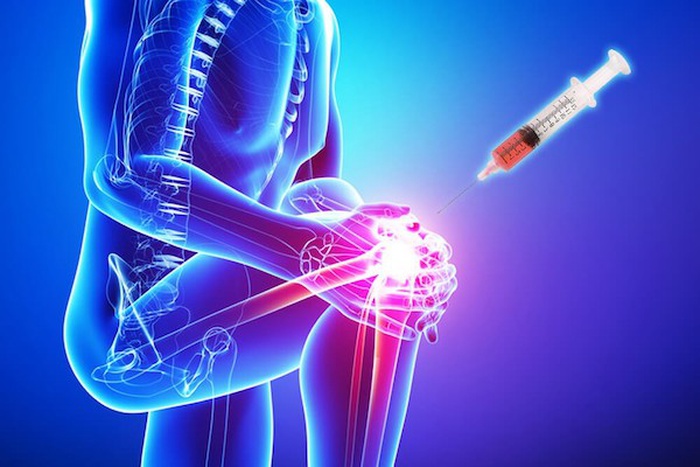
PLATELET-RICH PLASMA (PRP)
WHAT IS PRP (PLATELET-RICH PLASMA)?
The blood mainly contains small solid components (red cells, white cells, and platelets) and also liquid (called plasma). The main mission of platelets is clotting the blood. However, platelets also contain hundreds of proteins called growth factors, which are very important in the healing of injuries. PRP is prepared from the patient’s blood. The platelets are separated from other blood cells with centrifugation. The concentration of platelets is increased during the process. Essentially, PRP is blood plasma that contains a high platelet concentration. To create the PRP for treatment, a small quantity of the patient’s blood is drawn. Next, the whole blood is separated in a centrifuge to isolate layers of red blood cells, platelets and white blood cells, and plasma. The platelet and white cell layer is then isolated and centrifuged again to isolate the platelets. Finally, a small amount of plasma is added to the platelets to create the injectable PRP. PRP supports the body’s self healing processes through its own cells. The platelets are important for clotting blood and contain proteins called growth factors which are important in the healing of injuries. With a higher concentration of these growth factors than typically found in blood, the PRP injections support the restoration of injured tissue in the body and inhibit painful inflammatory processes. After PRP enjection around 85% of all patients all returned to participating in sporting activities and saw clinically significant improvements.
How Does PRP Work?
Although it is not exactly known how PRP works, laboratory studies have shown that the increased concentration of growth factors in PRP can potentially speed up the healing process. Platelets contain over 30 bioactive proteins that are used in the healing of human body tissue. In addition, they secrete seven protein growth factors that trigger the process of wound healing. Finally, PRP contains three types of proteins that allow cells to adhere to one another, another critical process of healing. The various processes through which PRP treatments activate healing are highly complex. In the simplest terms, PRP injections activate the same processes the body would normally use, but amplified many times over.
Chronic Tendon Injuries
The research demonstrates a high therapeutic potential of PRP injections for orthopedic and sports-related injuries. PRP is generally used for tendinopathy, ligament injuries, plantar fasciitis, rotator cuff tears, ankle sprains and MCL tears.Tennis elbow, patellar and Achilles tendon injuries, and jumper’s or runner’s knee are also just a few of the general conditions that can benefit from PRP treatment.
Acute Ligament and Muscle Injuries
PRP therapy is also used about the treatment of acute sports injuries, such as ligament and muscle injuries. PRP has been used to treat professional athletes with common sports injuries like pulled hamstring muscles in the thigh and knee sprains.
Surgery
More recently, PRP has been used during certain types of surgery to help tissues heal. It was first thought to be beneficial in shoulder surgery to repair torn rotator cuff tendons and anterior cruciate ligament (ACL) surgery.
Conclusion
Even though the success of PRP therapy is still questionable,the most important thing is that the risks associated with PRP are minimal.
Result
PRP is frequently used for treatment in orthopedic and sports injuries, especially tennis elbow, tendonitis on the sole of the foot, shoulder cuff tears, ankle sprains, lateral ligament injuries in the knee, Achilles and patellar tendinitis. Although the efficacy of PRP treatment is not fully known yet, it is a method that can be used safely due to its low complication rate. The risk of causing pain, infection, nerve and tissue damage at the injection site is not different from other injection methods.
© COPYRIGHT 2025 ALL RIGHTS RESERVED
Privacy Policy